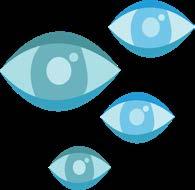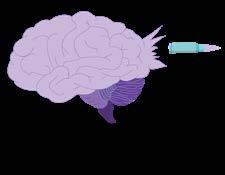ItsOKto notbeOK





For those who are struggling, or have struggled with depression.




Aheartfelt thank you to my friends Cole Guilhamet and Lexi Davis who were kind enough to share their experiences with depression with me.
I’d also like to thank Mr. Greco, whose feedback kept me motivated throughout the documentary process.
The most important person to thank is my mother who has been there for me since the beginning as a tireless advocate for better mental health resources for me. When I feel like giving up, she is there to remind me to look ahead to the future and that everything happens for a reason. With her support I have come to understand that the trauma I have experienced is something I can heal and grow from.


In writing about the issue of depression, my purpose is not meant to reassure the world that everything will be ok. There is a pervasive expectation for people, especially young people, to be happy all the time when this is neither a realistic expectation nor a healthy ideal. Everyone seems to think that mental issues are something to fix. In fact, such issues can allow one to grow. A young person with depression is still a normal teenager. If you take medication for depression, you are still fundamentally the same person. As a teenager with depression, I have often heard other people tell me what I need. What if a depressed teenager already knows what they need? And that need is to lay down and close your eyes for a moment instead of getting out and socializing. There is no one size fits all approach to this. Every depressed person needs something different and there is no quick fix. A human being deserves to feel sadness, whether the cause is a bad test grade or the chemical reality of depression. Depression has no physical form. Often a depressed person is indistinguishable from their happy peers. This book is not meant to tell a depressed person what to do to get better. Neither you nor I know how every depressed person feels or what they should do. This book is meant to be part of a larger conversation about the reality of depression as it is experienced by myself and people I know, to bring to light an issue that has been hidden due to stigma and shame.


Isat across from my therapist, uncertain what to expect. As an anxious seventh grader, I did not understand this at the time, but I soon learned that everything I had been feeling was connected to one word: depression. This was just the start of my treatment, and little did I know that it would follow me into high school. There has been increasing concern over rising rates in depression and suicidal feelings, particularly among teens. Even before the advent of COVID, the CDC has been researching and studying this phenomenon. Despite earning good grades and keeping a schedule full of extracurriculars and social activities, teenagers are up against the same psychological and emotional battles as any adult. This struggle is far more difficult for teenagers who have depression.




According to the CDC, “nearly 3 in 5 (57%) U.S. teen girls felt persistently sad or hopeless in 2021—double that of boys, representing a nearly 60% increase and the highest level reported over the past decade.” This data demonstrates how depression is a prominent, ongoing issue for teenagers. Now schools must do more to help the young people affected by this, as schools play a large role in the struggle and can play just as large a role in relieving it. Debra Houry, CDC’s Chief Medical Officer and Deputy Director for Program and Science, emphasizes that “High school should be a time for trailblazing, not trauma.” Basically, Houry is saying that, unless something is done, children will continue to suffer with trauma that affects the quality of their high school life.

“High school should be a time for trailblazing, not trauma.”

When asked why it matters that people understand the effects of depression, eleventh grader Lexi Davis points out “I know tons and tons of people that I can name off the top of my head who struggle with it”.









“Never confuse a single defeat with a final defeat.”
-F. Scott Fitzgerald





Major depression involves a teen’s body, mood, and thoughts, affecting eating, thinking, and sleeping patterns. Stanford Medicine’s description of major depression in teens highlights how “Teens with depression can’t merely pull themselves together and get better” (“Major Depression in Teens”). Depression is shown through many different symptoms which vary depending on the teen. Leaving depression untreated can come with many risks including lasting for years, causing relationship and social problems, and leading to substance abuse and suicide. Depression is indicated by specific signs that warn something is wrong. These factors are all vital to a young person’s life such as “Poor school performance and frequent absences from school” and “loss of interest in family and friends” (“Teen Depression”). This is concerning because teens rely on friends and family for support, especially in early adolescence. How will they get the help they need if they are pulling away from the people that are there to help them?

FALIURE WRONG MISTAKE ERROR
WORRY FEAR END SUICIDE STRESSED
NORMAL SUFFERING DESPAIR GUILT
HOPELESS SADNESS PROBLEM TIRED
HEALTH CRISIS PESSIMISTIC DISTRES
PRESSURE SUFFER GRIEF MISERABLE


LONELY HELP EXHAUSTED EXCUSES
MISERY INSOMNIA ANGER TENSION
UPSET TROUBLE TEARS STRESSED

To answer this question, we must listen to the voices of those who are currently fighting against depression in their high school career. Lexi, from Mountain View High School, recounts her struggle: “I remember the first time that my mom saw my self-harm scars. She kind of freaked out which makes sense and she kind of was just like “Oh my god Lexi why would you do this”. Her description shows a fear of worrying her own mother may have prevented her from seeking help and support during a vulnerable time. Later during this same interview, Lexi went on to explain how “it was very hard for me to do difficult or simple tasks like brush my teeth, take a shower, brush my hair, go to school, and do homework”.

This is similar to another eleventh grader whom I spoke with about his experience with depression in high school. He says, “It’s really tough to initiate tasks and get the motivation to start and continue doing work, especially homework and even just really simple seeming things like, you know, getting off the couch.” Difficulty with simple daily tasks has a debilitating effect on the lives of young people who are not only trying to make it through the day, but through high school itself. Lexi said it best when she characterized depression as “a giant weight on your shoulders making it really difficult to stand up and do normal things.” This is an accurate depiction of depression, one that people should be able to grasp. Testimonies such as Lexi’s are crucial in understanding and treating depression as a legitimate condition, one that must be taken as seriously as any other disability.
















As depressed teenagers contend with carrying this heavy weight, the school environment can exacerbate all of the symptoms they need relief from. Clearly anyone with depression who is also attending school is in need of treatment and additional support. In a study conducted by Substance Abuse and Mental Health Administration, more than half of teenagers ages 12-17 are not receiving treatment for their depression. In light of this lack of treatment, it does not come as a surprise that a depressed teens’ grades may decline. Mental health experts have studied this phenomenon, and one such study found “Children may engage in anxious-avoidant behaviors during school tasks that affect overall performance. Additionally,
depressive symptoms of lack of motivation, fatigue, and difficulty concentrating may interfere with academics” (McCurdy, et al.). This, combined with high academic standards and expectations, can cause a great deal of stress regarding failure that worsens a depressed person’s feelings of being stuck. There’s a shocking lack of treatment to accommodate the increase in depression. There is such a worsening of student mental health by any and all standards that the Surgeon General, Vivek H. Murthy, published an advisory to alert the entire nation about this health crisis. Prior to the COVID-19 pandemic Murthy stresses how “. . . mental health challenges were the leading cause of disability and poor life outcomes in young people, with up to 1 in 5 children ages 3 to 17

in the US with a reported mental, emotional, developmental, or behavioral disorder.” The rate of depression has reached the level of national crisis yet, the expectations and demands placed on students with depression remain the same.

Afriend of mine since middle school, Cole
Guilhamet, spoke about how the rigors of school conflict directly with the mental toll depression can take. Cole explains how “There’s this ruthless cycle of losing motivation and falling behind and then having to catch up. But seeing that big fat list of missing assignments and having to catch up again, you lose more motivation so then you end up being more behind.” This cycle is one that I have seen repeat again and again among my peers and myself. The worst part is being caught in the cycle, aware you are in it, but being unable to escape it. It gets to a point where teachers can only do so much within their power and “it doesn’t feel like it’s enough to say you get extended time on tests or extensions because those are really helpful but they don’t seem to be enough mentally.” The sad truth is often there is no solution and the only thing to do is to push through. The feeling of giving up persists twenty four-seven, and all you can do is go through the motions. Everything becomes tedious and you don’t know why you are still pushing through. Depression hides your motivation from you, even for things you would normally want to do. The professionals call this anhedonia, an inability to feel joy. As Winston Churchill said, “If you’re going through hell, keep
going.”
Not only do academic pressures demoralize a depressed teen, social pressures are also a factor. When asked about the social environment at the school she attends, Lexi paints a scene that is “very clique-y and I think it’s very hard to thrive there if you have mental illness and if you’re not picture perfect, straight, white, skinny, blonde type of thing. And I just think that everybodys very judgy.” Finding the perfect social group can be hard for teens with depression as it’s more difficult to connect with others in general. It’s already hard enough to connect and socialize in high school without the added barriers and walls that depression automatically puts up. The student body alone is not enough to address this issue. Adult leaders, administrators, counselors and teachers in schools must show their support for the mental health of their students. Teachers alone can make a massive difference yet as Lexi says “I think some teachers still need to get behind that and kind of accommodate students that have depression or other mental illnesses.”

“There’s this ruthless cycle of losing motivation and falling behind and then having to catch up.”





While the struggle is great, students are not without resources and support on campus. The students at Mountain View High School, for example, are lucky enough to have certain mental health services available. There is a system in place that allows students to reach out anonymously on behalf of themselves or others in need. This is a simple form that can be filled out online or scanned via QR code. Once submitted, an effort will be made to schedule an appointment with a professional who can help. In addition to this, links to crisis services are available on the school’s website. Another positive form of outreach at MVHS are awareness-raising events such as Spartan Pause, particularly the student wellness initiative, described on their web page as being committed “to supporting student wellness by providing a variety of healthpromoting activities to all students on a monthly basis.” Additionally, an annual event on campus is the “Out of the Darkness” Walk to raise suicide and mental health awareness. During this event, attendees do laps around the track. While they walk they wear necklaces of different colors to represent different types of mental concerns from attempted suicide to losing a loved one to suicide to simply showing support as an ally. Nearby, organizations like Community Health Awareness Council and Children’s Health Council are distributing information about their services. It is encouraging to see community members come to show their support, and the teams of people who are willing and able to talk to young people in need. While it is fortunate that students at MVLA have these services,
the need remains for more guidance and support for how to use these resources and encouragement for people to utilize them even when not currently experiencing a mental health crisis. More education for students themselves about how to appropriately use these services is needed, along with education for the adults who serve as gatekeepers to access these services. No one wants to feel shamed or like asking for mental health help is a burden. A week designated for mental health awareness is a nice gesture, but without continuous adult support it can only have so much impact. At times it feels like the school doesn’t have enough power to address the issue, and even working towards a solution isn’t enough. Those who occupy higher positions within the school district need to recognize the mental health crisis and take concrete steps towards providing mental health support on campus for students. Instead of saying there is a problem, take action. Cole believes “the admin could do more. And maybe just the school district in general.
I think it’d be nice if they addressed it a little bit more so instead of the student body, because it’s important that the student body does that, but I think it’s more important for the people that run the school to be more active about it.” It should be easier to get help from teachers and to receive accommodations specifically for the challenges depression presents to affected students. In failing to ease the way for a depressed teen, yet another wall of separation is put into place that prevents reaching out for help elsewhere.















“ In this day and age, I think everyone struggles with it to an extent.
Although progress has been made in raising awareness for mental illness, we still have a long way to go before the stigma associated with depression is gone. A study of Youth in Psychiatric Outpatient Treatment conducted by the NIH in 2012 addresses this stigma and details how youth experience it. They found that “Youth in psychiatric treatment acknowledged that their larger cultural context holds pejorative viewpoints toward those with mental illness and reported experiences of stigma within their families and social networks” (Elkington, et al.). Stigma has a devastating consequence of isolation as affected teens may internalize the harsh judgements of those around them and withdraw further. It is in the interest of society as a whole to fight this stigma, and can benefit by decreasing negative behavior long-term. This behavior includes “(a) distancing from the labeled group and (b) silence and withdrawal. Use of these coping mechanisms was possibly driven by the youth’s general awareness of the negative views about those with mental illness (Elkington, et al.)” In the worst case scenario, the pattern of behavior can culminate in suicide. This is a very real risk when depression goes untreated or under-treated. Yet there are ways we can alleviate the harmful effects of stigma. Education is a big part of the solution, and Cole agrees: “I do think the more we talk about it and have a slideshow to play or something for one of your classes. I think the more we do that, the more people can start to recognize that ‘maybe I need help or I do need help and that’s okay.”

The more we bring attention to depression and mental health within classrooms, treating it like a topic that is
not taboo, the more people may develop a willingness to engage in helpful forms of treatment such as therapy. It’s important to shine light on the effects of depression for everyone’s sake because in Cole’s words, “. . .in this day and age, I think everyone struggles with it to an extent.” Being open about depression will normalize it as a topic of discussion, giving people a chance to address how they experience it so they can begin to cope and to heal.


“You say you’re ‘depressed’ — It doesn’t mean you’re defective —
all I see is resilience. You are allowed to feel messed up and inside out. it just means you’re human.”

-David Mitchell


Our community expects teens to maintain high academic performance, engage in a full-day of activities outside of school, and keep an active social life. These expectations contradict the reality of the national mental health crisis teens with depression are facing now. While academic, extracurricular, and social struggles are common among all students, teens dealing with depression have to struggle much harder. Even simple daily tasks can become seemingly impossible obstacles, let alone reaching out for help. When the reality of depression is placed within the context of a high-pressure academic school, mental health can start to deteriorate. Adults who work at the school, from counselors to administrators and teachers, may not understand how their students are feeling or may be disconnected from this issue. Often adults misunderstand depression as a part of growing up and being a “moody” teen. Ideas like this fuel a stigma surrounding depression in young people. Educating people and taking real steps in order to support those who are struggling is necessary in order to maintain a healthy environment. School administrators and staff must be trained to provide support for this portion of the student population. We can no longer write off the needs of depressed students. Depression is a worldwide crisis that can be fatal if we continue to ignore it and pass it off as simply part of the ups and downs of adolescence.

Students can anonymously report concerns about themselves or others and connect them to mental health professionals.

“NAMI California works to provide a strong, coherent system that offers a continuum of care for the persistent, long-term needs of people with mental illness. NAMI California advocates for increased research to uncover causes and new, effective treatments. NAMI California strives to eradicate stigma.”
Mental health resources for youth from the California Health and Human Services Agency. CHHS provides a variety of links and resources for youth.

Davis, Lexi. Personal interview. 05 March 2023.
Guilhamet, Cole. Personal interview. 22 March 2023.
“Major Depression in Teens.” Stanford Medicine Children’s Health Lucile Packard Children’s Hospital Stanford, https://www.stanfordchildrens.org/en/topic/default?id=major-depression-inadolescents-90-P01614.
“Teen depression.” Manila Bulletin, 26 Mar. 2018. Gale In Context: Global Issues, link.gale.com/ apps/doc/A532440722/GIC?u=moun43602&sid=bookmark-GIC&xid=2d3dc13a. Accessed 27 Apr. 2023.
Buchholz, Katharina, and Felix Richter. “Infographic: More U.S. Teenagers Are Experiencing Depression.” Statista Infographics, 21 Nov. 2019, https://www.statista.com/chart/20052/ share-of-us-teenagers-experiencing-depressive-episodes-and-receiving-treatment/.
Elkington, Katherine S, et al. “Perceived Mental Illness Stigma among Youth in Psychiatric Outpatient Treatment.” Journal of Adolescent Research, U.S. National Library of Medicine, Mar. 2012, https://www.ncbi.nlm.nih.gov/pmc/articles/PMC803 1474/.
“Youth Mental Health Resources Hub.” California Health and Human Services, 5 May 2023, https://www.chhs.ca.gov/youthresources/.

“Side Effects of Untreated Depression.” WebMD, WebMD, https://www.webmd.com/depression/guide/untreated-depression-effects#:~:text=Untreated%20clinical%20depression%20 is%20a,difficult%20to%20overcome%20serious%20illnesses.
Murthy, H. Vivek. Protecting Youth Mental Health. 2021. https://www.hhs.gov/sites/default/ files/surgeon-general-youth-mental-health-advisory.pdf?bingParse. Pdf.
McCurdy BH, Scozzafava MD, Bradley T, Matlow R, Weems CF, Carrion VG. Impact of anxiety and depression on academic achievement among underserved school children: evidence of suppressor effects. Curr Psychol. 2022 Sep 30:1-9. doi: 10.1007/s12144-022-03801-9. Epub ahead of print. PMID: 36213567; PMCID: PMC9524334.
“Mountain View High School.” Mountain View High School - Spartans PAUSE Student Wellness, https://mvhs.mvla.net/ParentsStudents/Parent-Booster-Organizations/MVHS-PTSA/Spartans-PAUSE-Student-Wellness/index.html.
“Posts.” Instagram, 2022, https://www.instagram.com/mvhsoracle/

“CHC Logo.” Children’s Health Council, 2023, https://www.chconline.org/. Accessed 5 May. 2023.
“CHAC Logo.” Community Health Awareness Council, 2023, https://www.chacmv.org/. Accessed 5 May. 2023.
Mitchell, David. Cloud Atlas. Hodder Stoughton Ltd, 2019.
Levy, Simon, and F. Scott Fitzgerald. F. Scott Fitzgerald’s Tender Is the Night. Dramatists Play Service, Inc., 2013.
“MVLA Student Support Referral Form (English).” Informed K12: Digital Forms for K12 Education, https://app.informedk12.com/link_campaigns/mvla-student-support-referral-formelectronic-form?token=FfsLpPWfS98i2RiHN1vG7gVS.
“Homepage.” NAMI California, 28 Dec. 2022, https://namica.org/.


My name is Eva D’Antonio and I am a junior at Mountain View High School, as well as attending Freestyle Academy. I’m not afraid to speak out about social justice. I’m an advocate for those who are struggling with mental health. I appreciate all aspects of art and I love being creative. My cats, Loki and Freya, are my constant companions who have seen me through the hard times. Their presence in my life means more to me than words could ever convey. My hobbies include sewing, playing video games, and messing around with my friends. I hope to continue my artistic endeavors in college where I plan on studying in New York.


